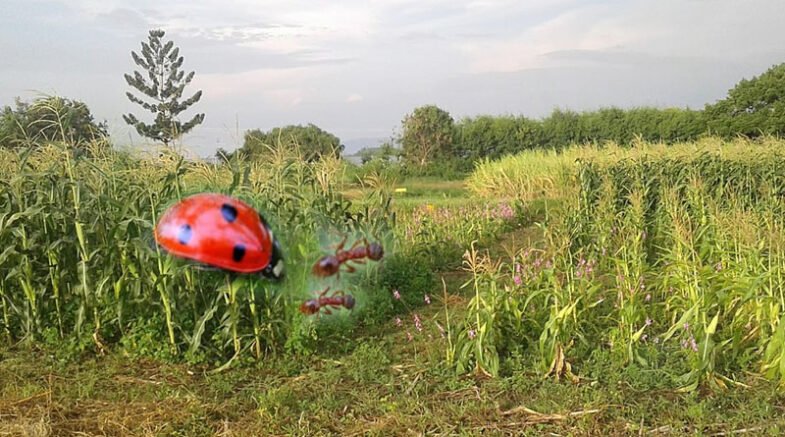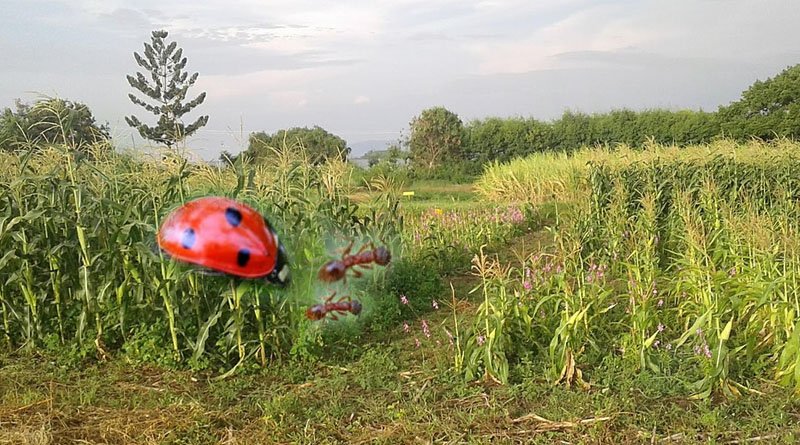Trap crop technology is the most reliable insect pest control technique, coupled with selective use of pesticides.

Trap crop technology is the most reliable insect pest control technique, coupled with selective use of pesticides. Trap crops always provide an effective safety cover for the main crop against all kinds of insect pest attacks.
It is a reality that old innovations serve as the foundation for further discoveries in their respective fields. But unfortunately, in our universities and research institutions, such a basic principle is sometimes ignored. Decades ago, when pesticides were not introduced, farmers were mostly using “Trap Crops Technique” to save their main crop against insect pest damage.
For this purpose, they were cultivating a few lines of some more palatable crop around their main crop to create a centre of attention for the insect pests to feed on. For example, they were cultivating “Brassica” around wheat fields, “Sesame” around cotton fields, and “Sunkukra or Ladyfinger” around sugarcane fields, etc.
Ultimately, being a more palatable food, the insects were attracted to feed on those trap-crops, and their main crops were not damaged. In the modern age, our extension workers and farmers hardly know about the use of this technology. Even the farmers don’t practise this technique to avoid the insect pests attacking their main crops.
As an entomologist, in my opinion, this “Trap Crop Technique” can still be used with more effective results and can substantially reduce pesticide use in croplands.
For example, if we cultivate trap crops in rows around the main crops, these more palatable crops will attract all the insect pests to feed on them. Now, instead of applying pesticide on the whole crop field one can periodically spray the trap-crop rows to kill the attracted/collected insect pests.
This practice will not only reduce the amount of pesticides used in agriculture fields but will also protect their main crops from direct pesticide pollution.
Initially, being instantly result-oriented and easy in application, the use of chemical pesticides became very popular in many agricultural communities around the world. However, the progressive countries soon realised about their harmful effects and either stopped their use (organic agriculture) or adopted the more safe and selective pesticides for insect control.
Contrarily, in underdeveloped countries, these deadly pesticides are still in use and creating many problems. Such uninterrupted use of chemical pesticides has been reported to badly damage soil fauna as well as predacious fauna in agricultural lands.
In cases of careless handling, even the lives of the local people are said to be at stake; therefore, their rational use in combination with other pest control measures has been advised through “Integrated Pest Management” practices.
The use of trap crops is a natural and safe method for avoiding crop losses due to insect pest attacks. Furthermore, it can be very helpful in minimizing pesticide use and will ultimately reduce direct pollution of the agricultural ecosystem.
As an aftereffect, this trap crop technology will help in reviving soil fauna, reinforcing biological pest management, improving crop yields, and enhancing the net return from agriculture resources in the country.
But unfortunately, under the current circumstances, our farmers hardly know about this technique. Even in our research institutions, the researchers never touch this topic or advocate for this ideal pest control strategy for field use, in spite of the fact that it is certainly an important segment for integrated pest management in croplands.
This article is jointly authored by Prof./Subject Expert Dr. Rashid A. Khan, Associate Professor Department of Forestry & Range Mgt. University of Agriculture, Faisalabad Dr. Fahad Rasheed and Ph.D. Scholar M.Usman.
